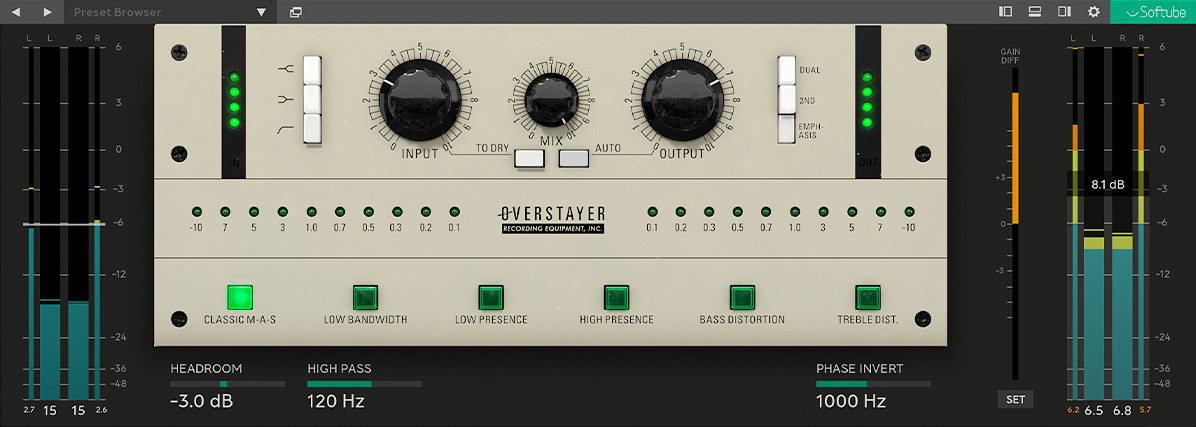Five ways to widen.


Make mono tracks stereo & stereo tracks wider or narrower

Five different algorithms for widening that suits your needs

Compatible with all generations of Console 1 Mixing System


Make mono tracks stereo & stereo tracks wider or narrower

Five different algorithms for widening that suits your needs

Compatible with all generations of Console 1 Mixing System
Also included in Flow® Mastering Suite
Pro mastering for the busy music producer. Learn more
Widener lets you create a stereo signal from a mono track or widen an existing stereo track with five unique widening algorithms. But why use a spatial widener anyway?
Opinions may vary on the risks of using spatial wideners, but the dirty little secret is this: many producers, and even mastering engineers, use them as an easy, effective way to make their track stand out. Caution must be used, of course, to avoid ruining your sound with unwanted artifacts. If you do, you have an amazingly effective tool to produce an immersive listening experience. Nothing ventured, nothing gained. Wade into the wider world with Widener.
Widener is effective on both mono and stereo sources. Turn mono into stereo to make your sound cut through the mix. Or use it to expand your mix as an alternative to other effects that might clutter the sound, like reverb or delay. Do this with the certainty that your sound will stay mono-compatible when using the Frequency Spread or Classic algorithm. In stereo, you can carefully widen the sound to enhance the three-dimensional space of your mix and create a sense of depth or you can make it narrower to bring focus to the mix. Widener doesn't only widen a mix, its crossfeed algorithms can also be used to create a more natural and cohesive sound image during the mastering phase.
Each mix is distinctive and comes with diverse challenges and necessities. Using stereo width to enhance your mix might produce artifacts you'll want to consider. That's why we included no less than five different algorithms: Classic, Frequency Spread, Rotation, Ambience, and Reflections. Each algorithm has a unique strength, which allows you to find the sweet spot for your stereo image and minimize those unwanted artifacts.
In short, the different algorithms use phase shifting, Mid/Side processing, or reverberation techniques to accomplish their sound. The goniometer and correlation meter provide real-time information about the stereo width and allow you to avoid pitfalls by confirming what you hear. Which empowers you to make the right choices for your mix.
Want to learn to identify the artifacts from, for example, the Classic algorithm? Listen to solely the left or right channel and slowly move the Size parameter. By listening to only one channel, your ears aren't so easily fooled by the stereo-izing trickery. Moving the Size parameter shifts the comb filters around, letting your ears home in on them.
When it comes to creating equipment that enhances workflow and offers supreme sound quality, our reputation is rock solid and illustriously long. Our partnerships with premium brands like Tube-Tech, Solid State Logic, Chandler Limited, Weiss Engineering, and Trident have spanned decades.
Widener was built on this legacy of creativity, passion, and obsession with the details. That’s because, to create tools that innovate and elevate, you have to have heart, soul, and Rock & Roll Science.
In short

We love VU meters, Bakelite knobs, and analog quirks. But we want modern precision and workflow. The answer? Softube Extended Features. Easy-access panels with the innovations you need close at hand.
Read full System Requirements and our Terms and Conditions